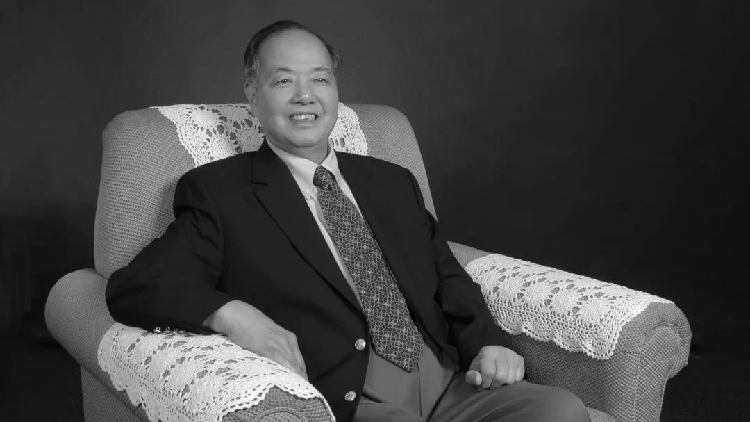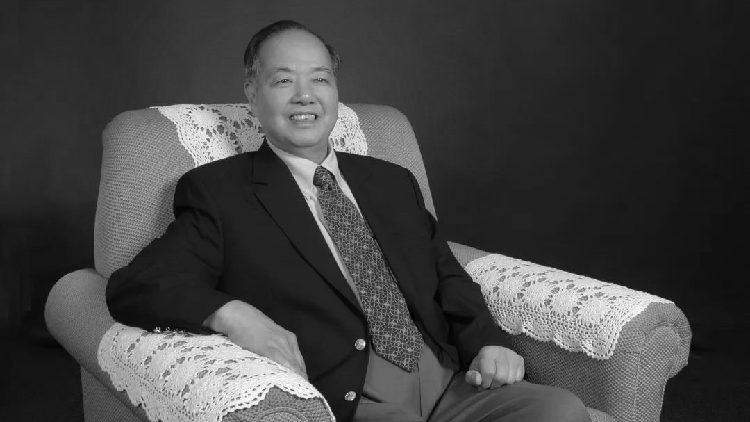Nobel laureate and leading physicist Tsung-Dao Lee passes away at 97


<img src='https://news.cgtn.com/news/2024-08-05/news-1vOScJzZCA8/img/89a57286e7f246ff8b62d3af925fdce9/89a57286e7f246ff8b62d3af925fdce9.jpeg' alt='File photo of Chinese-American physicist Tsung-Dao Lee (1926-2024). /CFP'
Nobel laureate and Chinese-American physicist Tsung-Dao Lee passed away at the age of 97 in San Francisco on Sunday, according to the Institute of High Energy Physics, Chinese Academy of Sciences.
Born on November 24, 1926, in Shanghai, Tsung-Dao Lee made groundbreaking contributions to physics, leaving a lasting impact on both theoretical and experimental physics. His work spanned a wide range of fields, including quantum field theory, particle theory, nuclear physics, statistical mechanics, fluid mechanics, and astrophysics.
Lee’s academic journey began at the National Chekiang University and the National Southwest Associated University from 1943 to 1945. He then pursued graduate studies at the University of Chicago from 1946 to 1950, where he was chosen by Enrico Fermi as a doctoral student. In 1950, Lee earned his Ph.D. degree on his thesis, “Hydrogen Content of White Dwarf Stars.”
His research career spanned several prestigious institutions, including the University of Chicago, the University of California at Berkeley, and the Institute for Advanced Study at Princeton. By 1953, he joined Columbia University as an Assistant Professor, later holding positions at Princeton and Columbia before becoming the Enrico Fermi Professor of Physics at Columbia University in 1964.
<img src='https://news.cgtn.com/news/2024-08-05/news-1vOScJzZCA8/img/b4e12d3852474de1a112e33d637769cc/b4e12d3852474de1a112e33d637769cc.jpeg' alt='Portrait of the Chinese-American physicist Tsung-Dao Lee. /CFP'
A lasting impact on global science
Throughout his career, Lee made groundbreaking contributions to particle physics, nuclear theory and statistical mechanics. In 1954, he introduced the renormalizable field theory model, commonly known as the “Lee model,” which was instrumental in addressing fundamental questions in quantum field theory.
In 1956, Lee, along with Chen-Ning Yang, discovered the violation of the parity law in weak interactions. This revolutionary work was experimentally confirmed the following year, fundamentally altering the understanding of symmetry in physics. Their discovery earned them the Nobel Prize in Physics and the Albert Einstein Award in Science. In 1957, at just 31, Lee became the second youngest scientist ever to receive the Nobel Prize.
Among Lee’s many prizes and awards are the Galileo Galilei Medal, G. Bude Medal, Science for Peace Prize, China National-International Cooperation Award, New York City Science Award, New York Academy of Science Award, Order of Merit Grande Ufficiale from Italy and Friendship Award of the Chinese Government.
In addition to these honors, Lee was a member of the United States National Academy of Sciences, the American Academy of Arts and Science, the World Academy of Sciences, and the Lincean Academy. In 1994, Lee was appointed as a foreign member of the Chinese Academy of Sciences.
Lee’s extensive research included significant advancements in understanding particle-antiparticle transformations, particularly through his work on parity violation. His influential publications, such as Particle Physics and Introduction to Field Theory, reflect his profound impact on the scientific community.
<img src='https://news.cgtn.com/news/2024-08-05/news-1vOScJzZCA8/img/c3ee8c0e9bae40f9a8d4b7161620534b/c3ee8c0e9bae40f9a8d4b7161620534b.jpeg' alt='Nobel Prize winners in science and literature are pictured after receiving their awards in Stockholm, Sweden, December 10, 1957. From left to right: Dr. Chen-Ning Yang; Prof. Daniel Bovet, awarded in medicine for his work in pharmacology; Dr. Tsung Dao Lee, who shared the physics prize with Chen for disproving the law of parity; Sir Alexander Todd, recognized for his achievements in chemistry, and Albert Camus, who received the prize in literature. /CFP
'
Mentor to generations of physicists
Lee’s dedication to advancing science in China was demonstrated through his efforts to promote scientific education and research. As early as the 1980s, he made pioneering contributions to nurturing early-career physicists by initiating the China-U.S. Physics Examination and Application (CUSPEA) program, which helped train 915 doctoral students. He also played a key role in establishing the China Center for Postdoctoral Studies and the China Postdoctoral Science Foundation.
Lee advocated for the establishment of the National Natural Science Foundation of China, helping to propose specific implementation plans that significantly contributed to the development of a science foundation system and had a profound impact on the advancement of fundamental science in the country.
Additionally, Lee played a pivotal role in initiating high-energy physics collaborations between China and the U.S. and was instrumental in the development of China’s first high-energy accelerator, the Beijing Electron-Positron Collider (BEPC). His initiatives also included founding institutions like the Beijing Institute of Modern Physics at Peking University, China Center of Advanced Science and Technology and Zhejiang Institute of Modern Physics at Zhejiang University, which have fostered scientific research and international collaboration.
For many years, Tsung-Dao Lee has been dedicated to advancing education in China and nurturing future scientists. In December 2014, he proposed establishing a world-class research institution at Shanghai Jiao Tong University, akin to the Niels Bohr Institute. In a letter to the leaders of the country, he outlined his vision to attract a diverse community of world-class scientists, create an inspiring environment for discovery, mentor exceptional Chinese scientists, and encourage groundbreaking work in physics and other interdisciplinary fields.
Tsung-Dao Lee’s legacy lives on through his substantial contributions to physics and his profound influence on scientific development in China and beyond. His passing marks the end of an era for the global scientific community, but his legacy will continue to inspire future generations of researchers and scholars.

